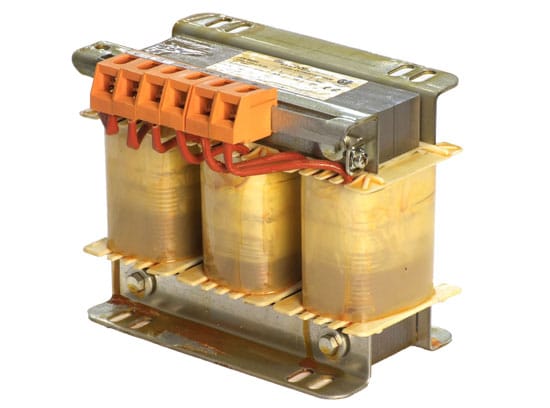This article written by Pablo Blázquez, Frenetic power electronics engineer explores a crucial decision in the world of Electrical design – whether to use a three-phase Inductor or three single-phase Inductors.
We will disclose the considerations behind the choice, and investigate the diverse applications where each option performs better.
Understanding the Basics
Before we dive into the advantages and applications of three-phase and single-phase inductors, let’s recap the fundamentals first.
Inductors are passive electrical components that store energy in the form of a magnetic field when current flows through them. They resist changes in current, providing a smoothing effect on the power supply.
And what does Three-Phase Power mean? In a three-phase power system, electricity is generated and distributed as three alternating currents with a 120-degree phase difference between each. This results in a balanced flow of power, which is efficient and minimizes voltage fluctuations.
Three Single-Phase Inductors: The Advantages
One of the benefits of using various single-phase Inductors is their flexibility. It provides greater flexibility in designing and customizing electrical systems, as you can select Inductors with different values and sizes for each phase, tailoring the system to specific requirements.
Another advantage is the maintenance of the equipment. It will always be much cheaper and easier to replace one single-phase Inductor than having to change the 3-phase Inductor. Basically, if one of the single-phase Inductors fails, it can be replaced independently, therefore minimizing downtime and maintenance costs.
Finally, another consideration on the cost savings side: in some cases, single-phase Inductors may be more cost-effective, especially for smaller-scale applications where precise balancing is not critical.
The Applications
Three single-phase Inductors find their niche in different scenarios:
- Residential and Small Commercial Buildings: in situations involving smaller loads, such as residential or small commercial buildings, the flexibility of single-phase Inductors can be beneficial. They are often used in lighting and small motor applications.
- Laboratory Settings: Laboratories often require customized electrical setups for experiments, and three single-phase Inductors allow researchers to fine-tune their power supply to meet specific experimental conditions.
- Prototyping and Testing: during the early stages of product development, when flexibility and rapid iteration are essential, three single-phase Inductors provide the adaptability needed for testing and refinement.
Three-Phase Inductor: The Advantages
Usually, three-phase Inductors excel in terms of efficiency. They are designed to handle the balanced load of a three-phase system, reducing energy losses and power dissipation.
Also, they can be more compact and space-efficient than using three separate single-phase Inductors, making them ideal for installations where space is limited. Last, but not least, three-phase power naturally reduces harmonics, which can improve power quality and reduce the risk of equipment overheating.
The Applications
Three-phase Inductors are indispensable in a wide range of applications:
- Industrial Manufacturing: large motors, conveyors, and heavy machinery in industrial settings often require three-phase power. Three-phase Inductors ensure a reliable and efficient power supply, reducing downtime and maintenance costs.
- Data Centers: they are critical to modern society, and any power interruption can have severe consequences. Three-phase Inductors are used to ensure a stable and continuous power supply, safeguarding data center operations.
- Renewable Energy: renewable energy sources like wind turbines and solar farms typically generate three-phase power. Three-phase Inductors help smooth the power output, making it suitable for grid integration.
- Commercial Buildings: large commercial buildings, such as shopping centers and office complexes, benefit from the space and cost savings of three-phase inductors. They are commonly used to power HVAC systems, elevators, and large lighting installations.
- Electric Vehicle Charging Stations: with the growing adoption of electric vehicles, charging stations require efficient and reliable power supplies, and three-phase Inductors play a vital role in maintaining the stability of charging stations, ensuring quick and safe charging.
Making the Right Choice
The decision between three-phase and three single-phase Inductors should be based on the specific requirements of your project. There are some factors to consider:
- Load Characteristics: evaluate the nature of the electrical loads your system will encounter. For balanced and high-power applications, three-phase Inductors are often the superior choice, while for smaller-scale or unbalanced loads, three single-phase Inductors may suffice.
- Space Constraints: consider the available space for your installation. In applications where space is limited, such as compact control panels or mobile units, three-phase Inductors offer a significant advantage.
- Budget: your budget constraints can also influence your decision. While three-phase Inductors are generally more efficient, they may come with a higher upfront cost. Assess your budget and long-term operating costs to make the best choice.
- Redundancy and Maintenance: three single-phase Inductors offer the advantage of easy replacement in case of a failure, potentially reducing downtime, while three-phase systems may require a more robust maintenance plan.
Conclusion
In the world of Electrical design, the choice between three-phase and three single-phase Inductors is not one-size-fits-all. Each option has its advantages and applications, and it’s crucial to assess your specific project needs and constraints to make the right decision. Whether you prioritize flexibility, efficiency, space savings, or cost-effectiveness, the right choice will ensure the success and reliability of your Electrical system.
If you have any questions or need guidance on selecting the appropriate inductor configuration for your project, don’t hesitate to reach out to our team of experts. Frenetic is here to help you make informed decisions and achieve optimal results in your designs.
